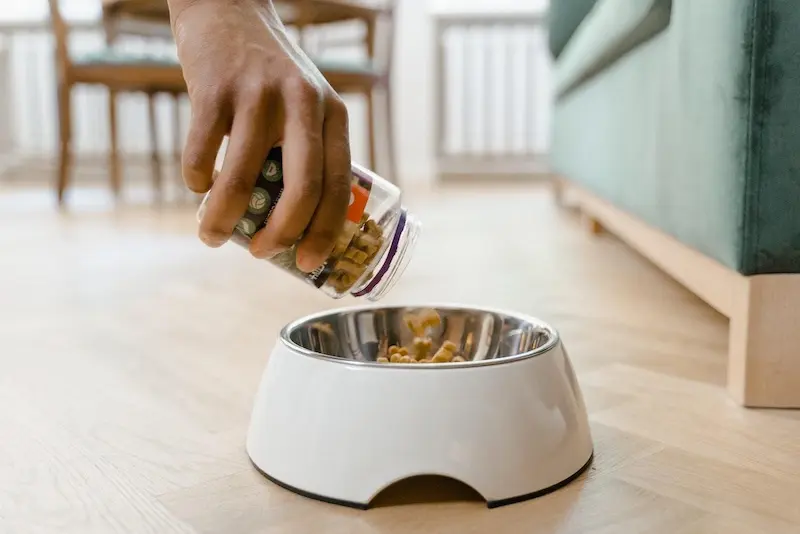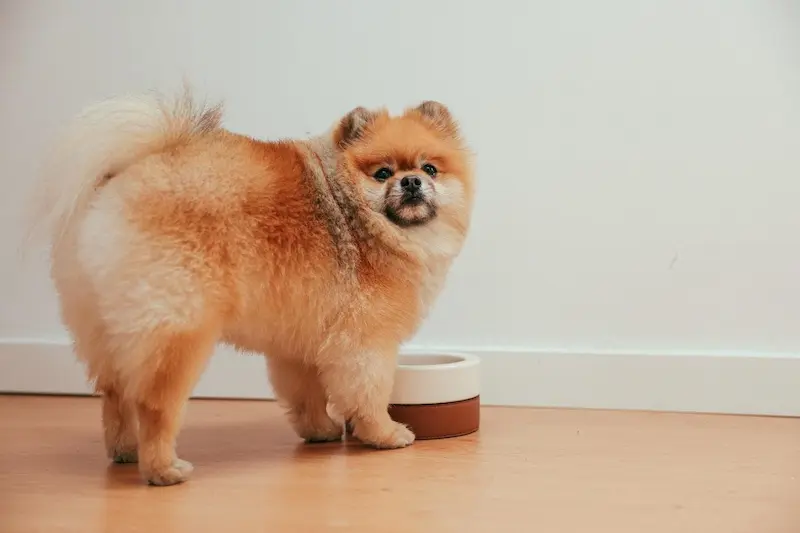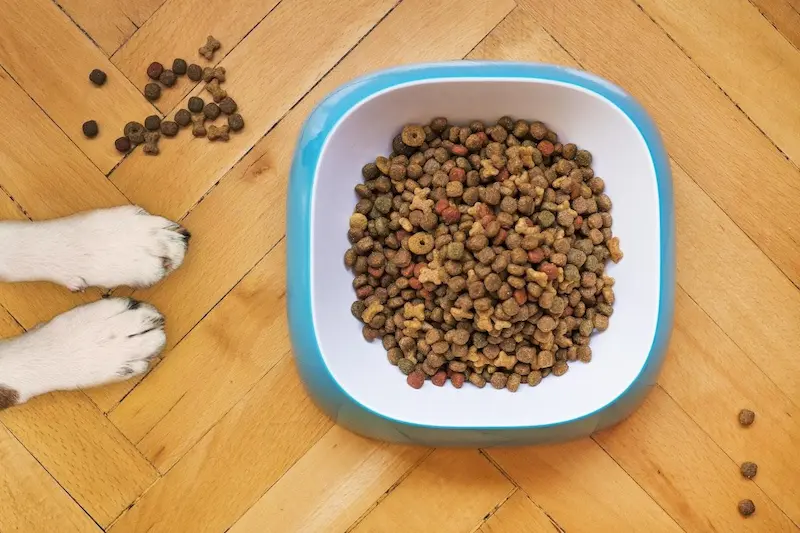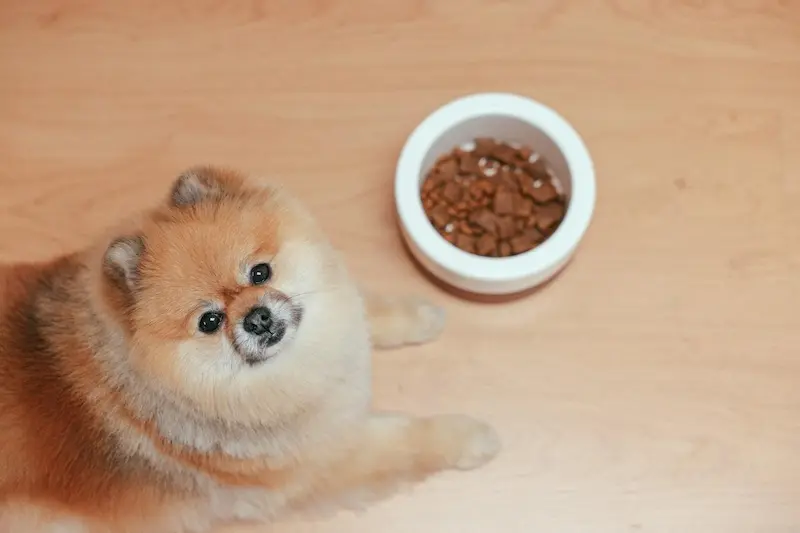Our furry friends deserve the best nutrition possible, and sometimes, this means switching their food to something that better suits their needs. But making the transition to new dog foods can be a challenge.
You want to make sure your pup’s getting all the nutrition it needs, but you also don’t want to upset its stomach or cause dog diarrhea in the process.
So, how do you make the switch successfully? Here are some tips and tricks from experts.
Table of Contents
Understanding Your Dog’s Nutritional Needs
Part of learning how to transition a dog to new foods is choosing the right foods for your pet.
So, before you make any changes to your dog’s diet, it’s important to understand its nutritional needs. According to Dr. Jennifer Coates, a veterinary writer for PetMD, dogs need a diet that is rich in protein as well as fat while being low in carbohydrates.
Some essential vitamins and minerals are also necessary to keep them healthy. When choosing a new food for your dog, make sure it meets these nutritional requirements and choose the new food carefully.
You may question whether the foods you once thought were safe are healthy for your dog. For example, are plums good for dogs? Or whether you should keep giving your pup the same treats as before.
Make sure you do your research, and if you’re still unsure, stick to reliable dog brands like Wild Earth dog food to ensure a safe transition.
How to Introduce New Food to Your Dog
Once you’ve chosen the new food, it’s time to start transitioning dog to new foods. The key here is to make sure you know how to switch dog food to new ones gradually.
“It’s essential to transition a dog slowly from their current food to the new food,” says Dr. Judy Morgan, a holistic veterinarian and author. “This allows the gut microbiome to adjust and change slowly without causing GI upset, diarrhea, or vomiting.”
Dr. Coates recommends starting with a mixture of 25% new food and 75% old food for a few days. Then, gradually increase the amount of new food while decreasing the amount of old food over the course of about a week. This slow transition will help your dog adjust to the new food and avoid dog diarrhea.

Transitioning Your Dog to New Food: Tips and Tricks
Now that you know the basics of how to transition dog to new foods, let’s take a look at some tips and tricks to make the process smoother.
Start With a Mix of Old and New Food
Mix about 25% of the new food with your dog’s old food to get it accustomed to the taste. You can gradually increase the amount of new food over a few days or weeks.
This applies to kibble, wet foods, and raw foods.
Take It Slow
Remember to make this transition slow and gradual. Rushing the process can lead to an upset stomach and diarrhea, which can be uncomfortable for your dog and messy for you.
According to Dr. Coates, “Switching a dog’s food abruptly can cause diarrhea, sometimes even vomiting. When a dog transitions from one food to another, it’s important to do so gradually.”
Be patient and monitor your dog’s behavior and stool during the transition.
Use the Same Brand
If possible, try to choose a new food that is from the same brand as your dog’s current food. This can make the transition easier on your dog’s digestive system because the ingredients and formula may be similar.
Add In Some Healthy Extras
You can also add some healthy extras to your dog’s new food, such as a spoonful of pumpkin purée or a sprinkle of probiotics.
These foods can help support your dog’s digestive health and strengthen its gut microbiome during the transition period.
Consult Your Vet
If you have any concerns or questions about changing dog food, don’t hesitate to consult with your veterinarian. They can provide guidance and support to ensure a successful transition.

Dealing with Dog Diarrhea from New Food
Unfortunately, even with the best planning and preparation, your dog may still experience diarrhea from the transition to new dog food.
“When transitioning your dog to a new food, monitor their stool and behavior for any changes,” advises Dr. Coates. “If you notice any vomiting, diarrhea, or other digestive upset, slow down the transition or consult with your veterinarian.”
If this happens, don’t panic. Here are some steps you can take to help your dog feel better.
Stop Feeding Your Dog New Food
If your dog experiences diarrhea, the first step is to stop feeding your dog the new food and go back to foods you know are safe for your dog. This will give its digestive system a break and allow it to recover.
Hydrate, Hydrate, Hydrate!
Make sure your dog drinks plenty of water and has access to clean water at all times. This will help prevent dehydration, which can worsen diarrhea significantly.
Offer Bland Food
You can also offer your dog some bland food, such as boiled chicken and rice. It will soothe its stomach and provide some nutrients while your pet recovers.
Monitor Your Dog’s Behavior and Stool
Keep a close eye on your dog’s behavior and stool. If diarrhea persists for more than a day or two, or if your dog shows other signs of illness, such as lethargy or vomiting, it’s time to call the vet.

Final Thoughts
These tips and tricks can help you make the transition to new dog food smoother and avoid dog diarrhea. Remember to take it slow, be patient, and consult with your vet if you have any concerns. With a little bit of planning and preparation, you can successfully transition your dog to a new and healthy diet.
Visit the rest of the site Updated Ideas for more useful and informative articles. If you want to write for us, just hit the contact button in the top right corner.
Thank you!

